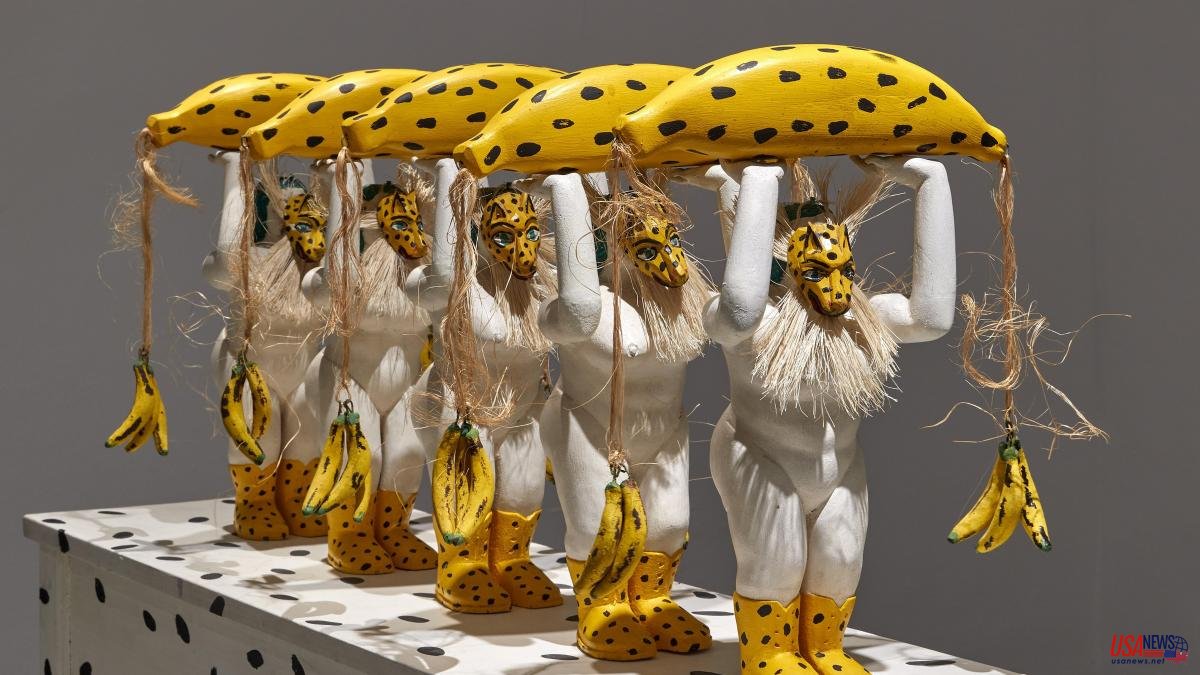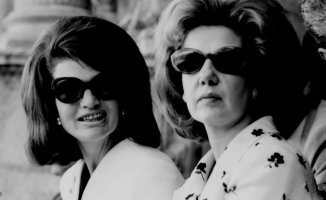Playful, healing, transforming art. "Having had to turn the earth into water to survive and the drought of my soul into joy, I navigated the river that joins me to the sea, breath of peace, nameless mother, goddess that you live in me", he writes in one of his paintings . "Neither my songs nor my meditations calm him down anymore. Who will be the enemy that lives with me that for nothing in the world I can push away or defeat?" He remarks in another. "Torment. Encounter. Integration", he finally concludes in a canvas in which he points out the three phases of the transformation processes of his life.
Margarita Azurdia and her multiple heteronyms, such as Margarita Rita Rica Dinamita, which gives the title to the great exhibition dedicated to her by the Reina Sofía Museum in Madrid, was an artist with a fruitful career who evolved from principles closely connected with the avant-garde to a reconnection with the traditional culture of his country, which he offered to the public in the form of colorful altars and powerful women who carried gigantic bananas in groups as well as weapons. And that she advanced, above all, to a reconnection with herself in paintings, drawings and performances that represent a whole spiritual path towards healing and personal and collective change.
Margarita Azurdia was born in 1931 and died in 1998 to a Catalan mother, Concha Arimany, and a Guatemalan father, Augusto Azurdia. with businessman Carlos Fanjul. There, he witnessed the movements that were taking place in Los Angeles and San Francisco, including the forms of American abstract expressionism, and when he returned to Guatemala, says the curator of the show, Rossina Cazali, he began to experiment in very personal ways that would already macarán his trajectory: "First he does it with circular, concentric shapes. Because he sees how important the circle is, compared to linear time, to see life through the circumference, which must circulate to reach the same place and close stages".
He dedicated a few years to each series of his work and showed them when he felt they were finished. For example, his initial and magnetic geometric paintings, presided over by the figure of the rhombus, in which op art, optical art, was mixed with the traditional motifs of the Guatemalan indigenous textiles. An abstraction that for some turned her back on the problems that were plaguing her country: in the midst of a debate between supporters of internationalism and those of the new humanism or new figuration, she did not want to explicitly represent the violence that surrounded her and believed that the most revolutionary it was the commitment to the search for new aesthetics.
And there, at the beginning of the seventies, his most powerful series would emerge, the painted wood carvings of his Homage to Guatemala series. She commissions cabinetmakers from Antigua, the city where she was born, wood carvings on which she intervenes with geometric designs but also adding masks, feathers, skulls, which refer to the country's tradition. The result, sculptures with a mixture of modernity and archaism that evoke the altars of the Guatemalan highlands while launching a feminist message with works with empowered women, almost goddesses, with animal masks on their faces and their naked bodies painted with motifs. geometric or sun-shaped, they wield upside-down Kalashnikovs or giant speckled bananas. For some, a symbol of the country's civil war, for others, pure magical realism.
After the series, he would begin a profound personal transformation, working with drawings and poems during the years he lived in Paris, from 1974 to 1982. There he began his search for his own spiritual and ritual language, betting on care, personal self-knowledge and connection to the sacred. In the series of drawings Recuerdos de Antigua he goes through his childhood, his family affective ties or his periods of illness to unblock past traumas.
Drawings with simple lines, almost childish, that mix texts, poems, colors and strokes and recreate his family, the spaces in which he grew up, sometimes as if they were paintings by Paul Klee, and also his healing and change processes. And his own stay in Paris. Drawings that are sometimes mystical and esoteric, in which the protagonists undergo a metamorphosis or look like tarot cards in which the character is simply 'La vie', life, or 'Le rencontre', the encounter. And that from time to time they vindicate the fragility of the natural environment and the affective ties between species, as with the dogs that he lived with, members of his family.
Precisely in the French capital, he would approach the world of dance and body art, a dance that would be reflected in the characters in his drawings but above all in the performances and rituals, such as the Love Ceremony for the goddess Gaia, which he would perform at his return to Guatemala. The last works he carried out, in 1998, are two altar cabinets that he signs as Margarita Anastasia -before Margot Fanjul would have called Una Soledad or Margarita Rita Rica Dinamita-, in which there are elements used in their rituals, such as flower crowns, candles or musical instruments, as well as wooden figures that represent the Mother Goddess. Some altars presented two and a half months before her death and which celebrated the rebirth of the author as a being of light.













